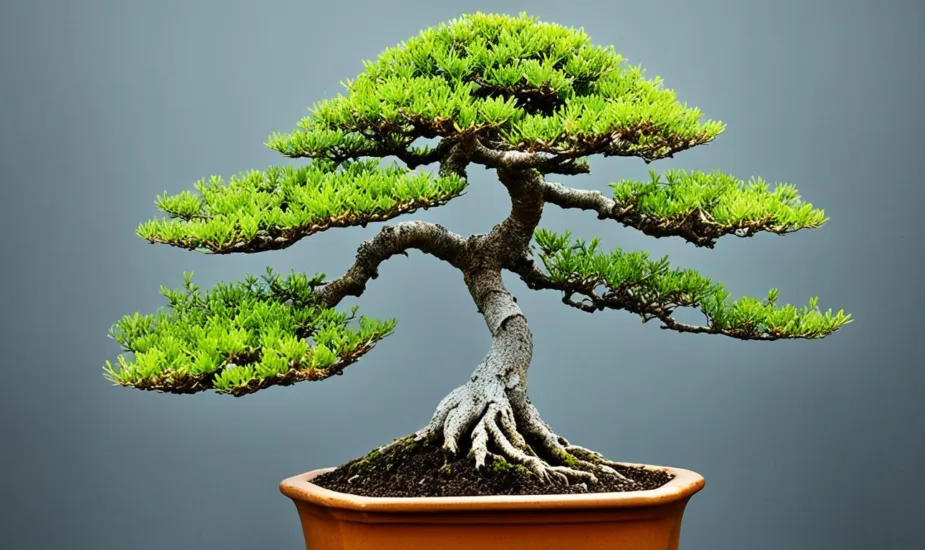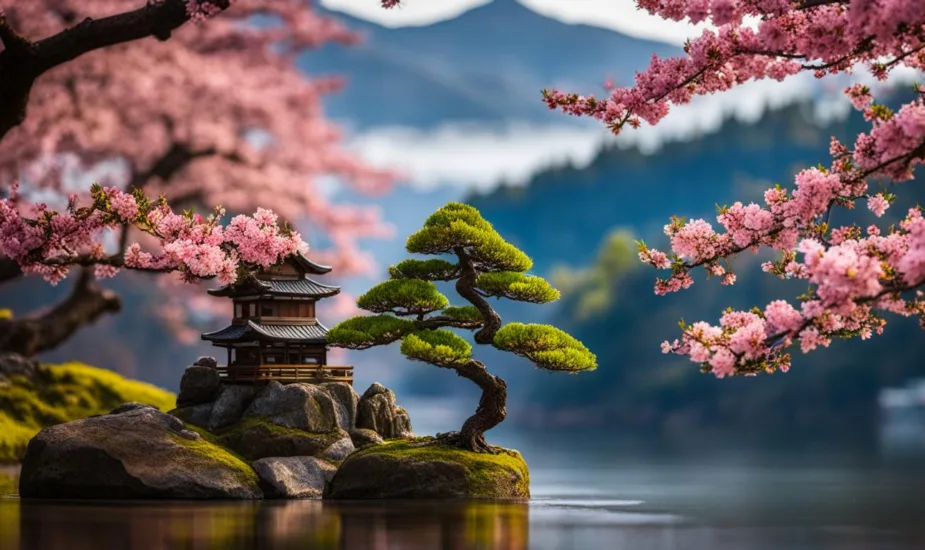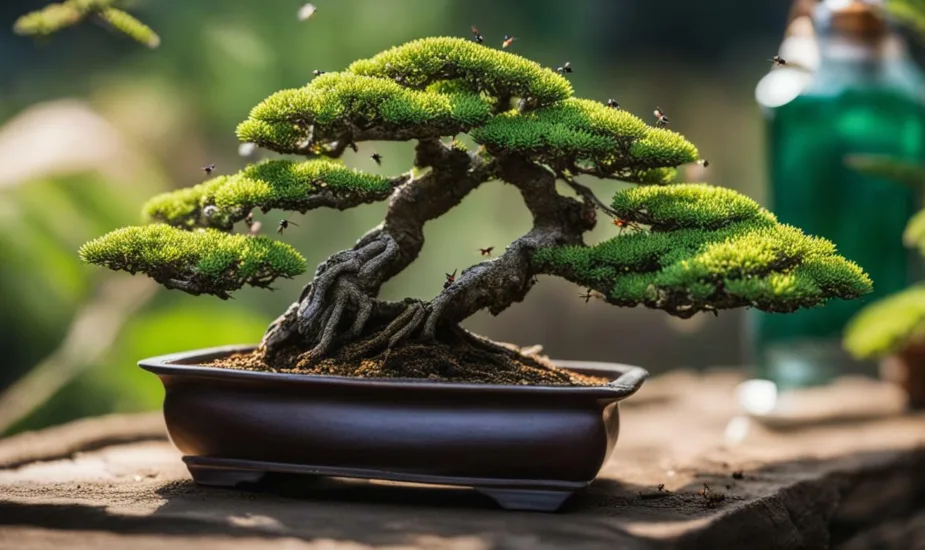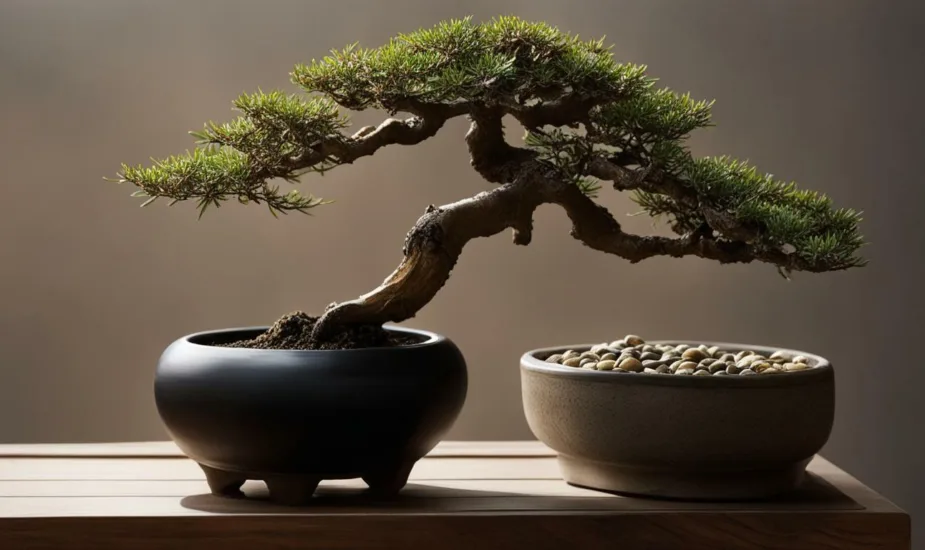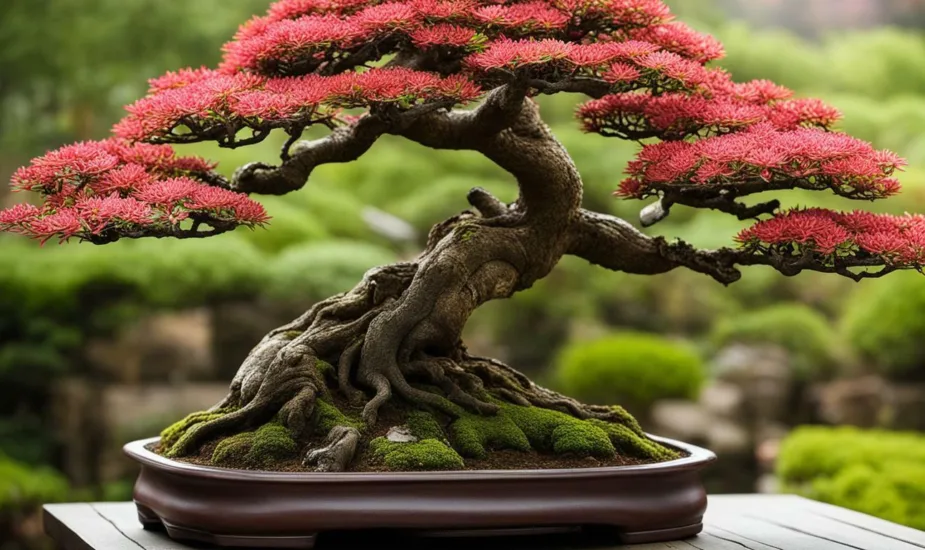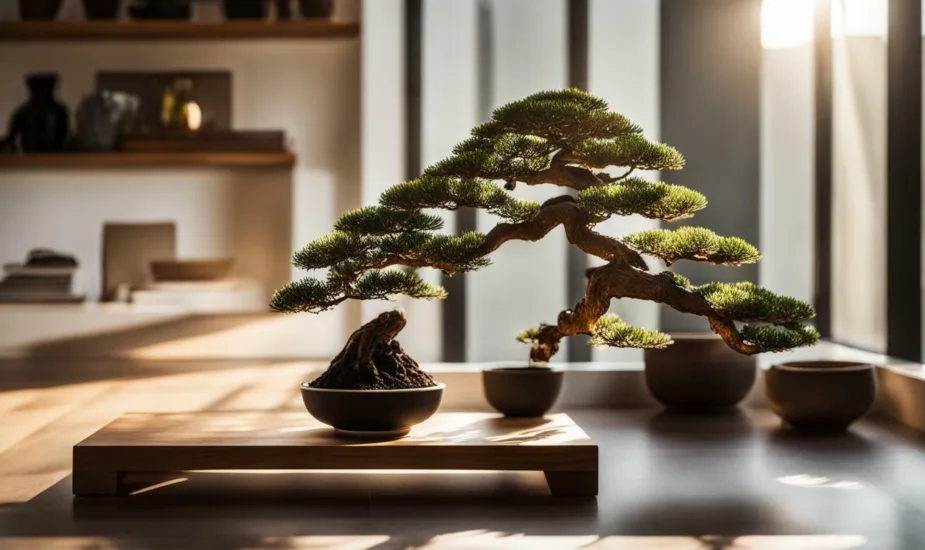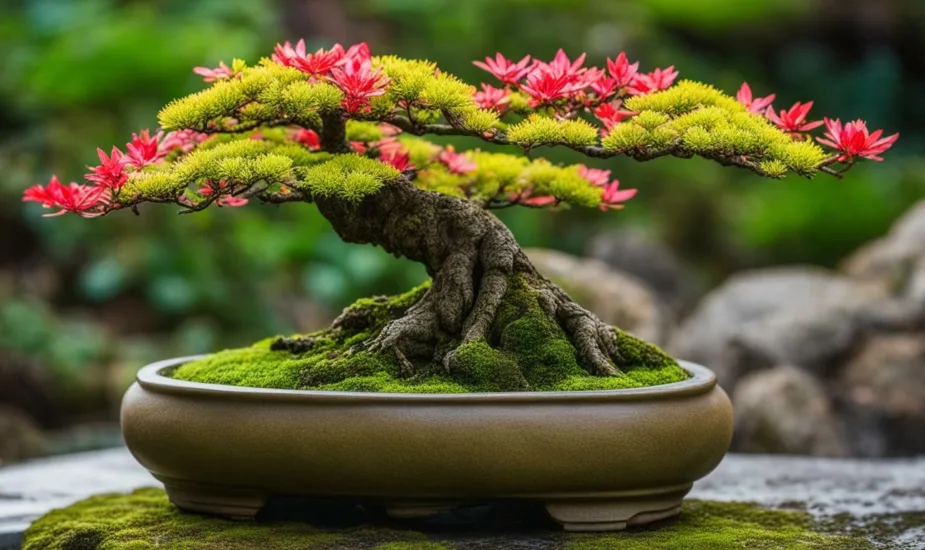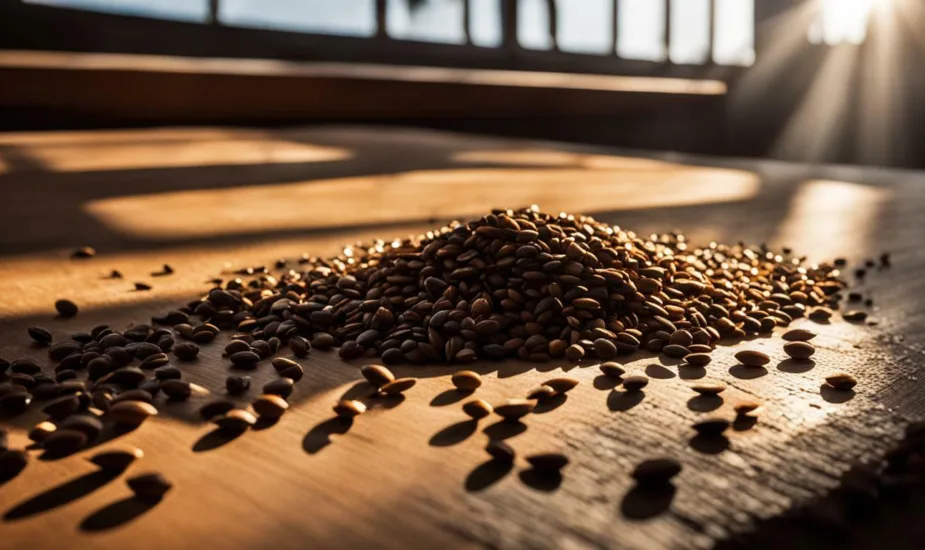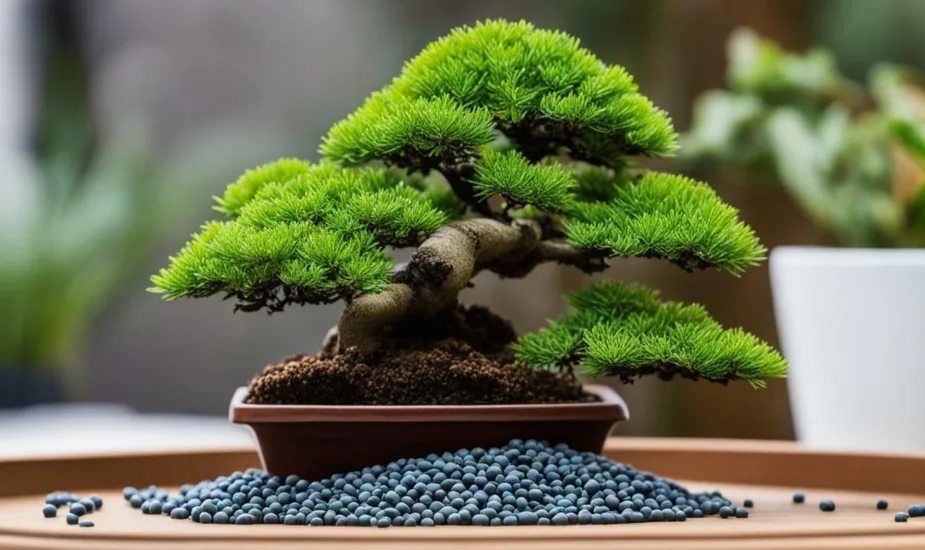Do Bonsai Trees Bloom? Discover Nature’s Miniature Marvels!
Bonsai trees are renowned for their unique beauty and artistic appeal, but do they actually bloom? In this section, we will explore the fascinating world of bonsai trees and investigate whether they have the ability to bloom. We'll also provide a helpful guide on how to make your bonsai tree bloom.

Bonsai trees are miniature trees that require patience, skill, and knowledge to cultivate. They are living works of art that mimic full-sized trees in a tiny form. The art of bonsai involves shaping and training the tree through pruning and wiring to achieve a desired shape.
Bonsai trees are not just regular potted plants; they require specialized soil mixes and careful care to thrive. The cost of bonsai trees can vary widely, depending on factors such as the tree species, age, rarity, and the skill of the bonsai artist. Bonsai trees are not only admired for their beauty but also for their historical significance and the artistic vision they represent.
The bonsai community is a great resource for learning and sharing knowledge about bonsai cultivation. Overall, bonsai trees are more than just plants – they are miniature marvels that require dedication, commitment, and a love for nature and art.
Key Takeaways:
- Bonsai trees are living works of art that require patience, skill, and knowledge to cultivate.
- The art of bonsai involves shaping and training the tree through pruning and wiring.
- Bonsai trees require specialized soil mixes and careful care to thrive.
- The cost of bonsai trees can vary depending on factors such as tree species, age, rarity, and the skill of the bonsai artist.
- Bonsai trees have historical significance and represent an artistic vision.
Understanding Bonsai Tree Blooming and Care
To understand the blooming potential of bonsai trees, it’s important to consider the specific care needs and ideal conditions for different varieties. Each bonsai tree species has its own requirements when it comes to flowering, and providing the right care can greatly enhance the chances of blooming success.
Flowering bonsai trees require special attention to ensure they reach their full blooming potential. These trees need adequate sunlight, typically around 6-8 hours a day, to promote healthy growth and encourage blooming. However, it’s important to avoid exposing the trees to excessive heat or direct sunlight, as this can damage the delicate foliage.
Proper watering is also crucial for the blooming of bonsai trees. It’s important to maintain a balanced watering schedule, ensuring that the soil is moist but not overly saturated. Overwatering can lead to root rot, inhibiting blooming and overall tree health. Regularly checking the moisture level of the soil and adjusting watering accordingly is vital.
In addition to sunlight and watering, providing adequate nutrition is essential for bonsai tree blooming. Fertilize your flowering bonsai tree with a balanced fertilizer during the growing season. This will help provide the necessary nutrients for robust growth and encourage blooming. However, be cautious not to over-fertilize, as this can lead to excessive foliage growth and hinder the blooming process.
By understanding the specific care needs of your bonsai tree variety and providing the right conditions, you can greatly enhance the chances of achieving beautiful blooms. Remember to research the specific care requirements for your particular bonsai tree species, as each variety may have its own preferences when it comes to light, water, and fertilization.
Pro Tips for Enhancing Bonsai Tree Blooms:
- Prune your bonsai tree regularly to maintain the desired shape and promote healthier branches and buds.
- Protect your bonsai tree from extreme temperatures and frost, as this can damage the delicate flowers.
- Be patient! Some bonsai tree varieties may take several years to mature and start blooming.
- Consider using organic fertilizers and soil amendments to improve the overall health and blooming potential of your bonsai tree.
- Join bonsai communities and attend workshops to learn from experienced enthusiasts and gain valuable insights into bonsai care and blooming techniques.
| Variety | Light Requirements | Watering Needs | Optimal Blooming Season |
|---|---|---|---|
| Cherry Blossom | Full sun to partial shade | Regular watering, allowing the topsoil to dry out slightly between waterings | Spring (March to April) |
| Wisteria | Full sun | Regular watering, keeping the soil evenly moist | Spring (April to June) |
| Azalea | Partial shade | Frequent watering, ensuring the soil remains consistently moist | Spring (April to May) |
Remember, bonsai tree blooming is a rewarding process that requires patience, dedication, and a deep understanding of the specific care needs of your bonsai tree variety. With the right care and attention, you can witness the breathtaking beauty of blooming bonsai trees in your own miniature garden.
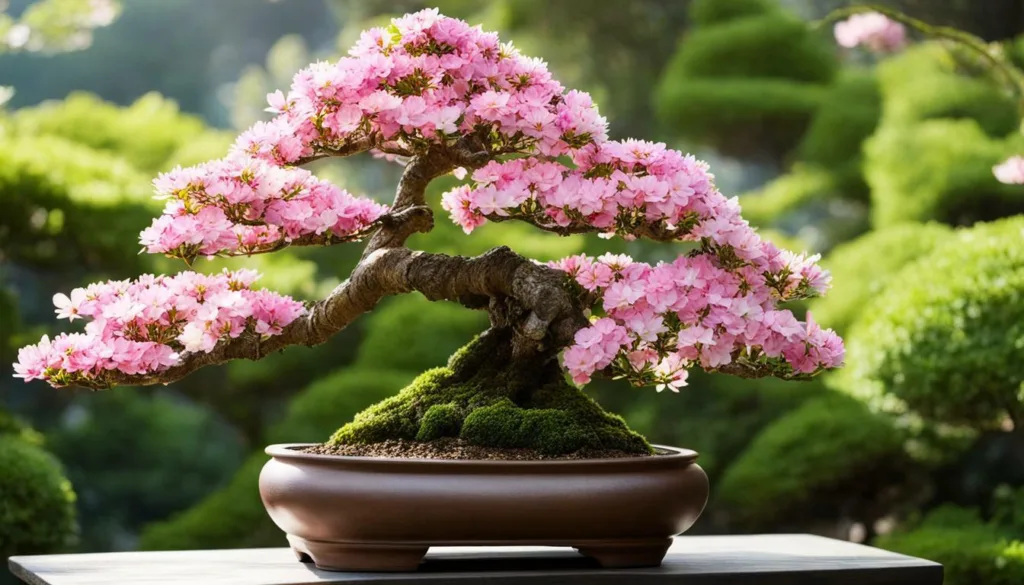
Appreciating the Beauty and Artistry of Bonsai Trees
The world of bonsai trees offers a vast array of flowering varieties that captivate enthusiasts with their exquisite beauty and delicate blooms. These miniature marvels encompass a diverse range of species, each with its own unique characteristics and visual appeal. From the vibrant blossoms of the Cherry Blossom Bonsai to the delicate petals of the Azalea Bonsai, there is a flowering bonsai tree to suit every aesthetic preference.
One of the key aspects of appreciating the beauty of bonsai trees is understanding the artistry involved in promoting their blooming. Bonsai artists carefully cultivate and train their trees to achieve an ideal balance of shape, size, and floral display. By employing techniques such as proper pruning, wiring, and fertilization, they coax the bonsai trees to produce stunning, miniature blooms that mirror their larger counterparts in nature.
Creating a truly captivating bonsai tree that bursts with color and fragrance requires patience and expertise. Bonsai enthusiasts dedicate years to refining their skills, mastering the art of promoting flowering and understanding the unique needs of each bonsai species. From creating the optimal growing conditions to implementing specific techniques like defoliation, these dedicated artists enhance the natural beauty of the bonsai tree, transforming it into a living work of art.
The Artistry of Promoting Bonsai Tree Flowering
When it comes to promoting blooming in bonsai trees, understanding the specific requirements of each flowering variety is crucial. Some bonsai tree species naturally bloom during specific seasons, while others may require special care and techniques to induce flowering. By studying the characteristics and needs of each type of flowering bonsai tree, bonsai enthusiasts can tailor their care and cultivation practices to maximize the chances of blooming.
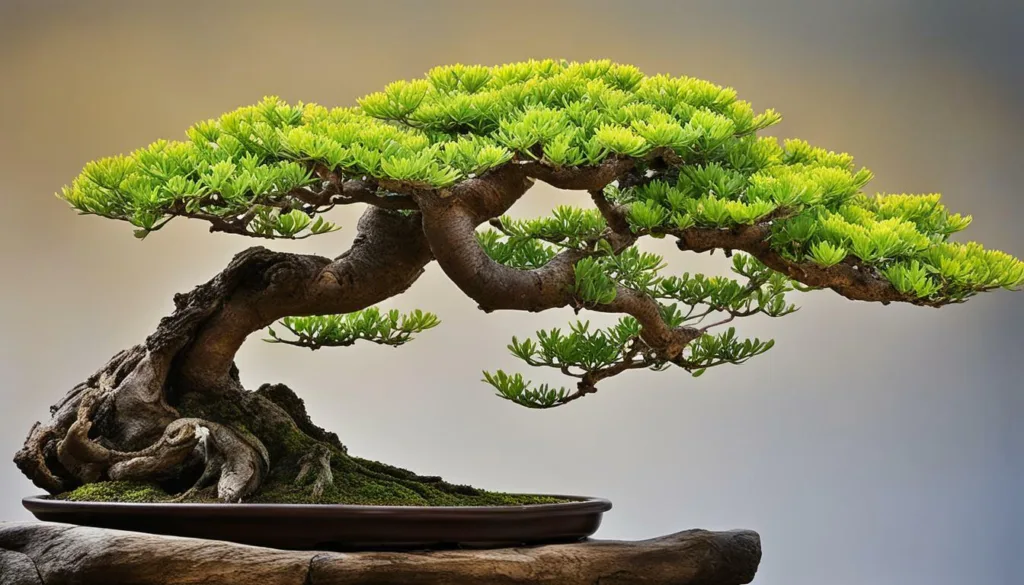
| Flowering Bonsai Tree Varieties | Blooming Season |
|---|---|
| Cherry Blossom Bonsai | Spring |
| Azalea Bonsai | Spring |
| Wisteria Bonsai | Spring |
| Camellia Bonsai | Winter |
| Juniper Bonsai | Year-round, with occasional blooms |
By selecting the right bonsai tree species and understanding their specific blooming patterns, bonsai enthusiasts can curate a collection that showcases a stunning array of colors and shapes throughout the year. Through proper care and cultivation, the beauty and artistry of bonsai trees can flourish, allowing these miniature marvels to bring joy and inspiration to all who appreciate them.
The Dedication and Beauty of Bonsai Trees
Cultivating and caring for bonsai trees is a truly rewarding endeavor, and by following the proper techniques, you can enhance their natural beauty and witness the wonders of blooming bonsai trees. Bonsai trees are not just ordinary plants; they are living works of art that require dedication, commitment, and a love for nature and art.
Bonsai trees mimic the grandeur of full-sized trees in a miniature form, captivating the imagination and inspiring awe. Through the delicate processes of pruning and wiring, bonsai artists shape and train these trees to achieve their desired form, resulting in a harmonious fusion of nature and human creativity.
The artistry of bonsai extends beyond mere cultivation. Bonsai trees are admired for their historical significance and the symbolic representation of the artist’s vision. Each bonsai tree tells a story, showcasing the artist’s skill and patience, as well as the unique characteristics of the tree species being cultivated.
While the price of bonsai trees may vary depending on factors such as age, rarity, and the skill of the bonsai artist, their value transcends monetary worth. Bonsai trees are treasured for their beauty and the sense of tranquility they bring to any environment. Their presence evokes a sense of harmony and balance, reminding us of the peacefulness found in nature.
The bonsai community serves as a valuable resource for learning and sharing knowledge about bonsai cultivation. Whether you are a novice or an experienced enthusiast, connecting with fellow bonsai enthusiasts can provide valuable insights and guidance throughout your bonsai journey.
In conclusion, cultivating and caring for bonsai trees is a fulfilling pursuit that requires dedication, patience, and a deep appreciation for both nature and art. By following the proper techniques, nurturing these miniature marvels, and creating an environment conducive to their blooming, you can witness the breathtaking beauty of blossoming bonsai trees and experience the true wonders they behold.
FAQ
Do bonsai trees bloom?
Yes, many bonsai trees have the ability to bloom. However, not all bonsai tree species are known for their flowers. Some species are cultivated primarily for their foliage or unique trunk formations.
How can I make my bonsai tree bloom?
To encourage blooming in your bonsai tree, you should ensure it is receiving the proper care. This includes providing adequate sunlight, watering consistently, and fertilizing appropriately. It is also important to choose a bonsai tree species that is known for its flowers.
When is the blooming season for bonsai trees?
The blooming season for bonsai trees can vary depending on the species. Some may bloom in spring, while others bloom in summer or even winter. It is best to research the specific blooming season for your bonsai tree species to ensure proper care.
How can I enhance the blooms on my bonsai tree?
To enhance the blooms on your bonsai tree, you can carefully prune and shape the branches to promote more flowering. You can also use specialized fertilizers designed to encourage blooming in bonsai trees. Additionally, providing the proper environmental conditions, such as appropriate temperature and humidity levels, can help enhance blooming.
What are some popular flowering bonsai tree varieties?
Some popular flowering bonsai tree varieties include Azalea, Cherry Blossom, Wisteria, Jasmine, and Bougainvillea. These species are valued for their beautiful blooms and are commonly cultivated as bonsai trees.
How do I promote blooming in my bonsai tree?
To promote blooming in your bonsai tree, you should ensure it is receiving the proper care, such as providing sufficient light, water, and nutrients. You can also create the ideal growing conditions for your species, such as mimicking the natural environment it thrives in. Regular pruning and shaping can also help promote blooming by encouraging healthy growth.
What should I do if my bonsai tree is not blooming?
If your bonsai tree is not blooming, there could be several reasons. Check if it is receiving enough sunlight, water, and nutrients. Ensure that you are following the specific care requirements for your bonsai tree species. If necessary, consult with a bonsai expert or join a bonsai community for guidance and advice.
How long does a bonsai tree typically bloom?
The duration of blooming for a bonsai tree can vary depending on the species. Some bonsai tree varieties may only bloom for a short period, while others can have extended blooming seasons. It is important to research the natural blooming pattern of your bonsai tree species to understand its specific duration of blooming.
 Little Garden Tips
Little Garden Tips




